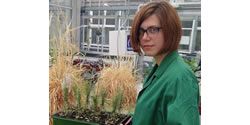Pioneering Biotech Innovations for a Healthier Future
It works by triggering specific gene responses in plants, which then activate heat shock proteins, antioxidant enzymes, and phytohormones-basically, all the things that help plants cope with stress and grow better.
Solving Biotech Challenges with AI
Conventional methods for developing biotechnology products rely on trial-and-error based processes, which are slow and laborious. Through biological design automation, innovative and successful products can be developed at unprecedented speed.
How Bioenergy With Carbon Capture and Storage Can Guarantee Supply
The Committee on Climate Change's (CCC) Sixth Carbon Budget report explains that, in order to achieve net zero emissions, the UK must eliminate all fossil fuel generated power by 2035 and increase variable renewable energy production by 80 per cent by 2050.
Rewiring plant defence genes to reduce crop waste
This method could render crops more resilient against disease, helping mitigate crop wastage throughout the world. Since the system can be implemented by re-wiring plants natural defence mechanisms, no external genetic circuitry needs to be added.
DVO Commissions First Anaerobic Digester Installation in Pennsylvania
The biogas generated from the waste streams is powering a 300 kW gen-set which delivers renewable electricity to the local grid.
Plastomics is growing the next generation of crops with agtech
Christine McGuigan for Silicon Prairie News: Plastomics chloroplast engineering is a platform that can efficiently introduce multiple traits into the chloroplast and enable simple, more predictable breeding of traits.
Piracy In The Fields: Agricultural Trade Secrets A Tempting Target
Bryan Thompson for Harvest Public Media: Agriculture today is a high-tech business, but as that technology has developed, so has the temptation to take short cuts and to steal trade secrets that could unlock huge profits.
Records 1 to 7 of 7
Featured Product

agrierp - Your One-Stop Farm Management Software
AgriERP is an all-in-one, comprehensive farm management suite, built by the farmers for the farmers to maximize profits. Built on the powerful ERP of Microsoft Dynamics 365, AgriERP enables farming enterprises to manage every aspect of their farm from financial management, inventory management, supply chain & logistics management, crop management, operations management, resource management, to sales, contracting, & shipping - All in a centralized platform.


.png)




